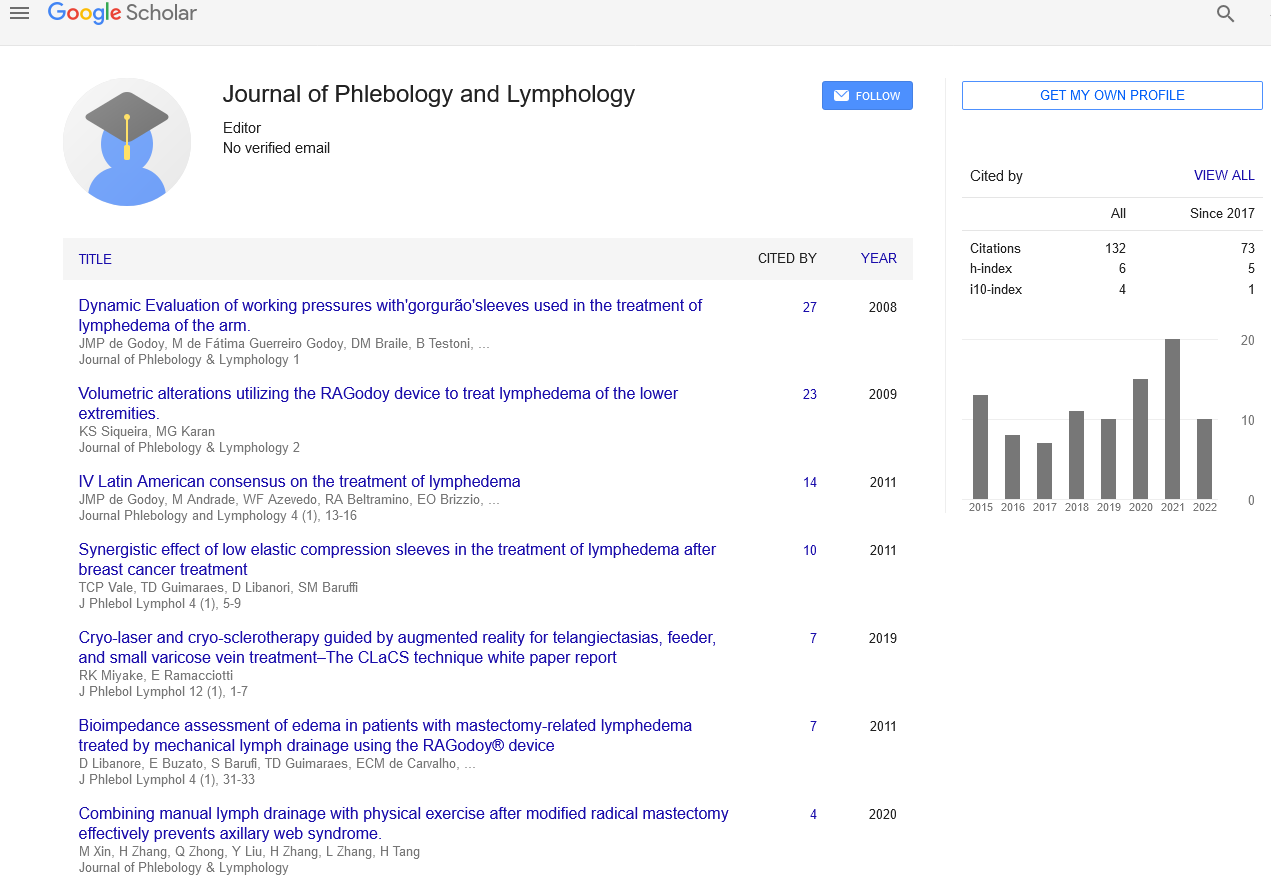Lymphatic vessel development and function
Received: 05-Aug-2023, Manuscript No. puljpl-23-6818; Editor assigned: 08-Aug-2023, Pre QC No. puljpl-23-6818 (PQ); Accepted Date: Aug 27, 2023; Reviewed: 23-Aug-2023 QC No. puljpl-23-6818 (Q); Revised: 26-Aug-2023, Manuscript No. puljpl-23-6818 (R); Published: 29-Aug-2023
Citation: Mulle H. Lymphatic vessel development and function. J Phlebol Lymphology. 2023; 16(3):01-02.
This open-access article is distributed under the terms of the Creative Commons Attribution Non-Commercial License (CC BY-NC) (http://creativecommons.org/licenses/by-nc/4.0/), which permits reuse, distribution and reproduction of the article, provided that the original work is properly cited and the reuse is restricted to noncommercial purposes. For commercial reuse, contact reprints@pulsus.com
Abstract
The lymphatic system plays a crucial role in maintaining tissue homeostasis, immune response, and fluid balance within the human body. Lymphatic vessels, a key component of this system, undergo
complex development and function throughout life. This article provides an overview of the development and function of lymphatic vessels, highlighting their significance in various physiological processes.
Key Words
Lymphatic vessels; Lymphangiogenesis; Lymphatic development; Lymphatic function
Introduction
The lymphatic system, a vital part of the circulatory system, is responsible for maintaining tissue fluid balance, absorbing dietary fats, and facilitating immune responses. Lymphatic vessels form a network that transports lymph—a clear, colorless fluid containing immune cells, proteins, and other molecules. The development and proper functioning of lymphatic vessels are crucial for overall health and wellness.Causes and Presentation Acute leg edema, also known as sudden leg swelling, can be a distressing postoperative complication following endoscopic knee surgery. It typically presents within the first few hours to days after the procedure. The edema is characterized by an abnormal accumulation of fluid in the tissues of the leg, leading to noticeable swelling, pain, and discomfort
Lymphatic vessel development, also known as lymphangiogenesis, begins during embryonic development and continues throughout life. During embryogenesis, lymphatic vessels emerge from preexisting veins through a process called lymphvasculogenesis. Key signaling pathways, such as Vascular Endothelial Growth Factor (VEGF)-C and VEGF-D, play pivotal roles in the differentiation, migration, and proliferation of lymphatic endothelial cells. These processes are tightly regulated and involve various transcription factors and signaling molecules.
In the postnatal period, lymphangiogenesis occurs in response to specific stimuli such as tissue injury, inflammation, or growth factors. The sprouting of lymphatic vessels from existing ones or the formation of new vessels contributes to the expansion and remodeling of the lymphatic network. Notably, the lymphatic system is highly adaptive and responsive to environmental changes, ensuring optimal function in response to varying physiological needs.
The primary functions of lymphatic vessels encompass fluid balance, immune cell trafficking, and lipid absorption. Lymphatic vessels collect excess interstitial fluid, known as lymph, from the tissues and return it to the bloodstream, thus maintaining tissue homeostasis. This process aids in preventing tissue swelling and maintaining the appropriate volume and composition of bodily fluids.
Additionally, lymphatic vessels play a critical role in the immune response by transporting immune cells, including lymphocytes, dendritic cells, and macrophages, to lymph nodes where they can interact and mount an immune response against foreign pathogens. The lymph nodes act as filtering stations, allowing immune cells to recognize and combat invading microorganisms present in the lymph.
Another essential function of lymphatic vessels is the absorption of dietary fats and fat-soluble vitamins from the gastrointestinal tract. Lymphatic capillaries in the intestines, called lacteals,absorb dietary lipids, forming a milky fluid known as chyle, which is transported via lymphatic vessels to the bloodstream.
Conclusion
The lymphatic system and its vessels are indispensable components of human physiology, playing critical roles in fluid homeostasis, immune surveillance, and dietary fat absorption. Understanding the intricate processes involved in the development and function of lymphatic vessels is essential forelucidating various pathologies related to the lymphatic system, such as lymphedema, immune disorders, and cancer metastasis.
The ongoing research in this field holds promise for the development of targeted therapies to treat lymphaticrelated diseases and improve overall health outcomes. Further investigations into the molecular mechanisms governing lymphangiogenesis and lymphatic vessel function are necessary to unlock the full potential of therapeutic interventions in this critical biological system.





